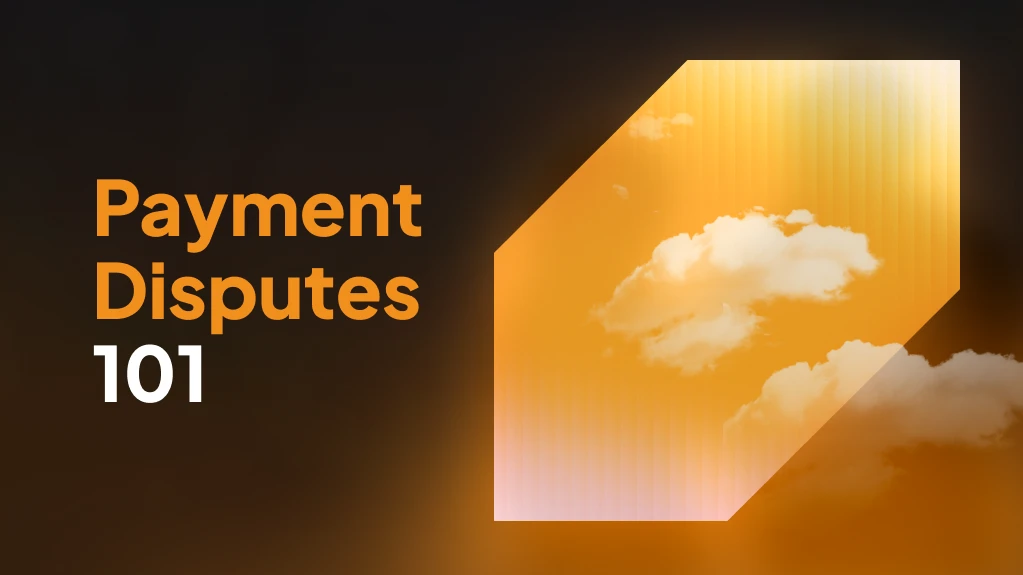Payment disputes can feel like a sudden roadblock to your business’s cash flow.
For membership businesses, where recurring payments are the foundation, a single dispute can be more than an inconvenience—it can create service interruptions, confuse your customers, and risk damaging your reputation.
In this guide, we’ll break down how disputes work, why they happen, and how you can reduce and respond to them effectively.
TL;DR
- A payment dispute occurs when a customer challenges a charge with their bank.
- Common triggers include fraud, billing errors, or unrecognized transactions.
- Disputes temporarily pull funds from the merchant, who must submit documentation to recover them.
- Clear policies, proactive communication, and timely responses are your best defense.
What Is a Payment Dispute?
What is a dispute in banking? It’s an official claim that a transaction is invalid, often leading to a chargeback—a forced refund. A payment dispute happens when a customer contacts their bank to contest a charge. The customer might claim they didn’t authorize the payment, that they never received the service, or simply that the billing statement was confusing.
In any of these cases, the payment processor will remove the disputed amount from your account and hold it until the issue is resolved. The key is that you, as the merchant, have to prove that the charge was valid. That’s why organized records and clear customer agreements are so important.
What Does “Dispute a Charge” Mean?
What does it mean to dispute a charge? It means that a cardholder believes something about the transaction is incorrect or unauthorized. They contact their card issuer to reverse the charge, often citing fraud, a service problem, or a billing misunderstanding.
For membership businesses, this can happen even when everything is legitimate. For example, your billing descriptor might not match your business name—”MSOL*FitnessCenter” instead of “EverFit Gym”—which can confuse the customer and trigger a dispute. These cases of “friendly fraud” are particularly frustrating but preventable.
5 Common Reasons for Dispute Charges
A disputed charge, meaning a customer officially claims that a transaction is invalid, is relatively common. Here are five common scenarios in which payment disputes might arise.
1. Fraud or Unauthorized Use
A member claims they didn’t make or approve the charge. This could be due to actual fraud, but often it’s a family member using the card without the owner’s knowledge.
These disputes are hard to contest without proof of authorization, which is why collecting signed agreements or digital consent is critical.
2. Services Not Received
The customer believes they didn’t receive what they paid for. In membership businesses, this could mean a class was canceled without notice, or a digital product wasn’t delivered.
Detailed attendance logs and service delivery records can often resolve these claims quickly.
3. Charges Not Recognized
Recurring payments can be forgotten or misunderstood, especially when the descriptor on the statement is unfamiliar.
This is one of the most preventable types of disputes. Utilize consistent branding and send automated reminders prior to each charge.
4. Product or Service Not as Described
A mismatch between what was promised and what was delivered can lead to disputes. Maybe the membership was supposed to include unlimited classes, but access was restricted.
Avoid these misunderstandings with transparent membership terms and digital documentation.
5. Duplicate or Incorrect Billing
Double charges or miskeyed amounts are simple mistakes that can lead to formal disputes. Always reconcile your records and automate billing where possible to minimize human error.
How Does a Dispute Work? 5 Steps of the Resolution Process
When customers dispute charges, meaning they make a formal challenge regarding a particular transaction, the merchant should undertake a dispute resolution process. This process can be broken down into steps.
Step 1: Dispute Is Filed
The customer contacts their bank or card issuer, initiating the dispute. The funds are temporarily removed from your account.
Step 2: Retrieval Request or Chargeback Notification
You receive a notification requesting evidence to support the transaction—this is your chance to respond before a formal chargeback is processed.
Step 3: Merchant Response
You submit evidence, including invoices, signed agreements, email communications, and proof of service delivery. The clearer and more thorough, the better.
Step 4: Bank Review
The bank evaluates your evidence alongside the customer’s claim. This review can take anywhere from 30 to 90 days, depending on the complexity.
Step 5: Outcome and Fund Reinstatement (or Loss)
If the bank sides with you, funds are returned. If not, the amount is permanently removed, often along with a dispute fee. Frequent chargebacks can lead to higher processing costs or even account termination.
How to Deal With Payment Disputes: 9 Resolution Tips
Dealing with payment disputes doesn’t have to be challenging. Here are nine tips to help resolve payment disputes.
1. Respond Promptly and Professionally
Time is critical. The dispute window is short, so act quickly and stay calm, even if the claim seems unjustified. A rushed or emotional response can weaken your case.
2. Compile Strong Evidence
Include the transaction date, proof of membership, communication records, and signed waivers or contracts. If your customer checked in at your facility or accessed digital content, include logs.
3. Understand the Client’s Reasoning
Disputes often arise from confusion or poor communication. Before escalating, reach out to the client—a simple explanation or quick resolution can lead them to cancel the dispute altogether.
4. Clarify Your Billing Descriptor
Ensure your business name appears clearly on all billing statements. If your processor allows it, include a phone number or website for customers to use for inquiries.
5. Maintain Detailed Records
Having easily accessible records is key. Our billing tools keep everything in one place—contracts, invoices, and attendance records—so you’re prepared if a dispute arises.
6. Send Proactive Communications
Automated receipts, charge notices, and renewal alerts reduce misunderstandings. We help our clients set up communication cadences to keep members informed and confident.
7. Avoid Unclear Terms or Surprise Charges
Every membership agreement should outline the billing schedule, cancellation policy, and refund conditions. Surprise charges are one of the fastest paths to a dispute.
8. Monitor and Learn From Dispute Trends
Regularly review your dispute history. Are the same issues recurring? Identifying the source helps you correct systemic problems.
9. Use a Partner Who Can Help You Respond
With Member Solutions, you’re not alone in navigating disputes. Our team provides dispute support and reporting tools, enabling you to respond effectively and reduce future claims.
Disputes vs. Refunds vs. Chargebacks: What’s the Difference?
Refunds are initiated by the business voluntarily to correct an issue or maintain goodwill.
Disputes are initiated by the customer through their bank.
When a dispute is successful, it becomes a chargeback, which forcibly reverses the funds and may incur a fee.
How Long Does a Customer Have to Dispute an Invoice?
Typically, customers have between 60 and 120 days from the transaction date to file a dispute, depending on the card issuer’s policies. This window can vary, so keeping records for at least six months is a best practice. The sooner you respond, the better your chances of winning the case.
Legitimate vs. Illegitimate Disputes
Legitimate disputes involve fraud or clear service failures. Illegitimate disputes, often called “friendly fraud,” occur when a customer disputes a valid charge, either by mistake or to avoid payment. These are the most frustrating and hardest to predict. Educating members, improving transparency, and using signed agreements can all help reduce them.
Best Practices to Prevent Invoice Disputes in the Future
You can help prevent future invoice disputes by following these best practices.
1. Use Clear Billing Descriptors
Make your business name recognizable on billing statements. If possible, include a customer service line to address concerns before they escalate into disputes.
2. Confirm Charges in Advance
Send emails before each billing cycle, particularly for annual or recurring memberships. Reminders reduce surprises, and our system can automate these notifications for you.
3. Require Digital Agreement to Terms
Make sure every member signs or digitally agrees to your terms. This documentation becomes critical in defending against future disputes.
Full‑Service Billing That Resolves Disputes—So You Don’t Have To
Tired of getting caught in the middle of billing disputes? Member Solutions takes care of it all with full-service billing support—combining smart automation, expert follow-up, and proven dispute resolution strategies to recover more revenue while protecting your brand.
From handling member questions to managing chargebacks, our team acts as an extension of yours—so you stay professional, stress-free, and focused on growth.
Let us handle the hard conversations. Book a demo today.
Final Thoughts
Payment disputes are inevitable, but they don’t have to derail your operations.
By understanding the process, staying organized, and communicating clearly, you can prevent many disputes before they happen and respond effectively when they do.
Partnering with Member Solutions gives you the tools, records, and support to handle challenges with confidence—so your focus stays where it belongs: on your members.
FAQs
What does dispute mean in banking?
A dispute in banking refers to a customer-initiated claim that a transaction on their account is incorrect, unauthorized, or fraudulent. The bank temporarily removes the funds from the merchant while it investigates the claim, requiring both parties to submit evidence before a resolution can be reached.
What happens to the merchant when you dispute a charge as a customer?
If you dispute a charge, what happens to the merchant? When a customer disputes a charge, the merchant’s account is debited for the amount in question. The merchant must provide documentation to defend the charge. If the case is lost, the funds are permanently removed and may be accompanied by additional fees or penalties.
Who pays when you dispute a charge as a customer?
Initially, the merchant covers the cost, as the disputed funds are withdrawn from their account. If the bank rules in the customer’s favor, the funds are not returned. If the dispute is resolved in the merchant’s favor, the money is reinstated.
What is the impact of payment disputes on small businesses?
Disputes can severely disrupt small business cash flow, increase payment processing costs, and consume valuable administrative time. Repeated disputes may also lead to a higher risk status with payment processors, making it harder or more expensive to accept payments in the future.
What is a dispute transaction on a debit card?
What does dispute a purchase mean, relating to debit card transactions? A debit card dispute transaction occurs when a cardholder challenges a charge made to their bank account. The bank reviews the claim and may temporarily reverse the funds until a decision is made. It’s commonly used to address fraud or billing issues.
What is the “disputed amount” meaning?
The disputed amount refers to the specific dollar value of the transaction that a customer is contesting. This amount is held from the merchant’s account during the dispute process and may be returned or permanently withdrawn depending on the resolution outcome.
When you dispute a charge, does the merchant know?
Yes, merchants are notified if you dispute a charge, meaning they are made aware by their payment processor or acquiring bank. They receive a request for supporting evidence and are given a deadline to respond with documentation to justify the charge.
How long does it take to resolve a dispute?
Most disputes are resolved within 30 to 90 days, depending on the card issuer’s policies and the complexity of the case. Timely and thorough documentation from the merchant can help accelerate the process and improve the chances of recovery.
Can you cancel a dispute you have already submitted?
Yes, a customer can usually cancel a dispute by contacting their bank, especially if the issue has been resolved directly with the merchant. Canceling quickly can prevent the merchant from incurring unnecessary fees or losses.
What is a negative dispute balance?
A negative dispute balance occurs when a merchant has more funds held in dispute than they are receiving in new payments. This can lead to withheld payouts or additional scrutiny from the payment processor and may affect business cash flow.
What is an authorization reversal?
An authorization reversal is a process that cancels a pending transaction before it is finalized. It typically happens when an error is detected immediately after the card is charged, and it prevents the charge from being posted to the cardholder’s account.
What is a retrieval request?
A retrieval request is a formal inquiry from a cardholder’s bank asking the merchant for transaction details before a dispute is filed. It gives the merchant an opportunity to resolve the issue early and potentially avoid a chargeback.
What is the role of a bank in disputes?
The bank serves as the mediator. The cardholder’s issuing bank initiates and investigates the dispute, while the merchant’s acquiring bank collects evidence and communicates with the card network. Both banks work to determine a fair resolution based on documentation.
What is a bank chargeback?
A chargeback is the forced return of funds to a customer after a dispute is ruled in their favor. It is initiated by the bank and includes a reversal of the transaction, often along with a fee charged to the merchant.
What are some examples of illegitimate payment disputes?
An illegitimate payment dispute, meaning friendly fraud, occurs when customers dispute valid transactions, such as forgetting a purchase, wanting a refund they’re not entitled to, or denying a family member’s purchase. These are challenging for merchants to defend against without clear documentation.
Who is typically involved in a payment dispute?
A payment dispute usually involves the cardholder, their issuing bank, the merchant, the merchant’s acquiring bank, and sometimes the payment processor. All parties play a role in documenting, investigating, and resolving the dispute.
Can a charge online be disputed?
Yes, online purchases can be disputed like any other card transaction. Customers may challenge charges for unauthorized use, undelivered goods, or misrepresented services. Merchants may make a dispute claim, meaning they refute such claims. Here, they must provide detailed evidence.
Can a pending charge be disputed?
No, pending charges typically cannot be formally disputed until they are posted to the account. However, customers can contact their bank to flag concerns, and banks may advise waiting for the charge to settle before taking action.
What laws regulate payment disputes?
U.S. laws like the Fair Credit Billing Act (FCBA) for credit cards and the Electronic Fund Transfer Act (EFTA) for debit cards outline consumers’ rights during disputes, including timeframes, documentation standards, and liability limits for unauthorized transactions.




